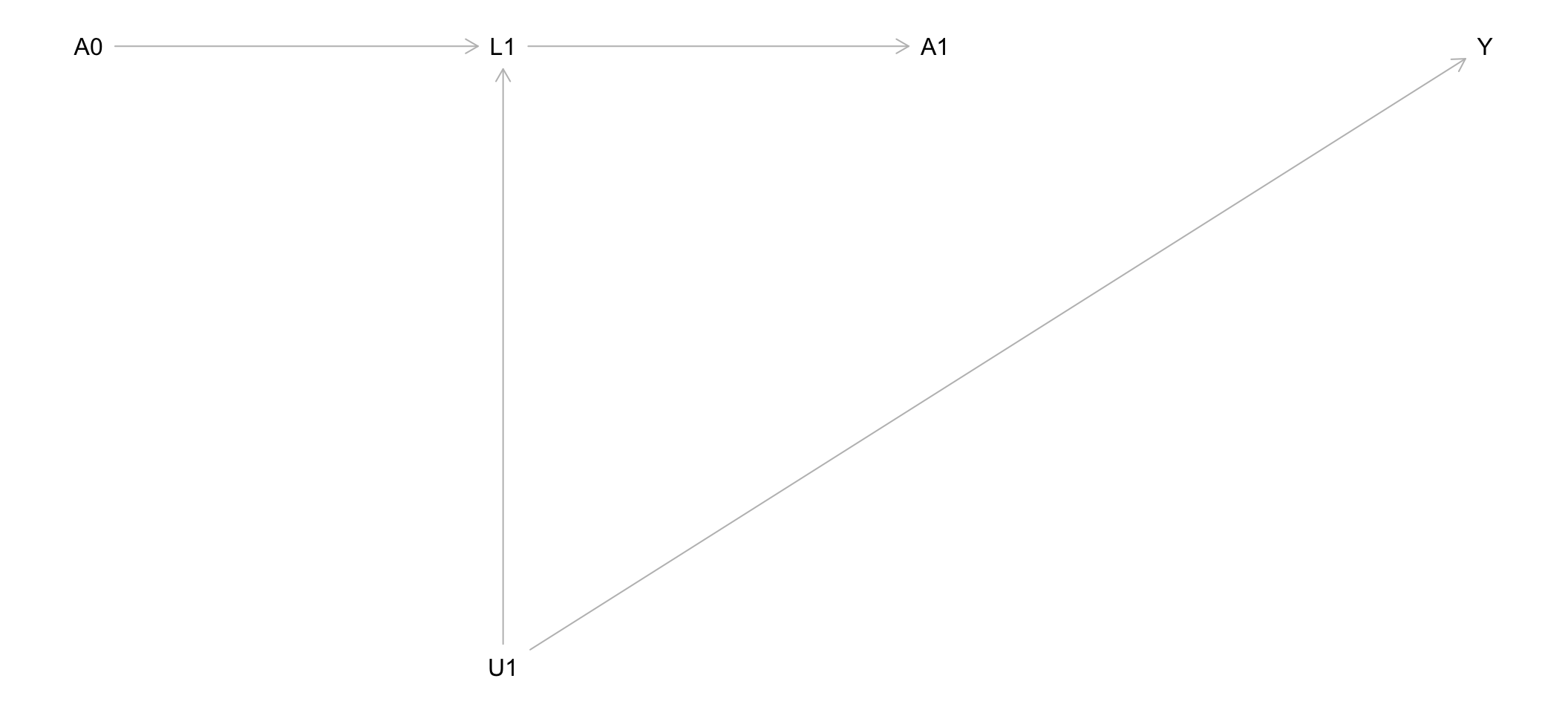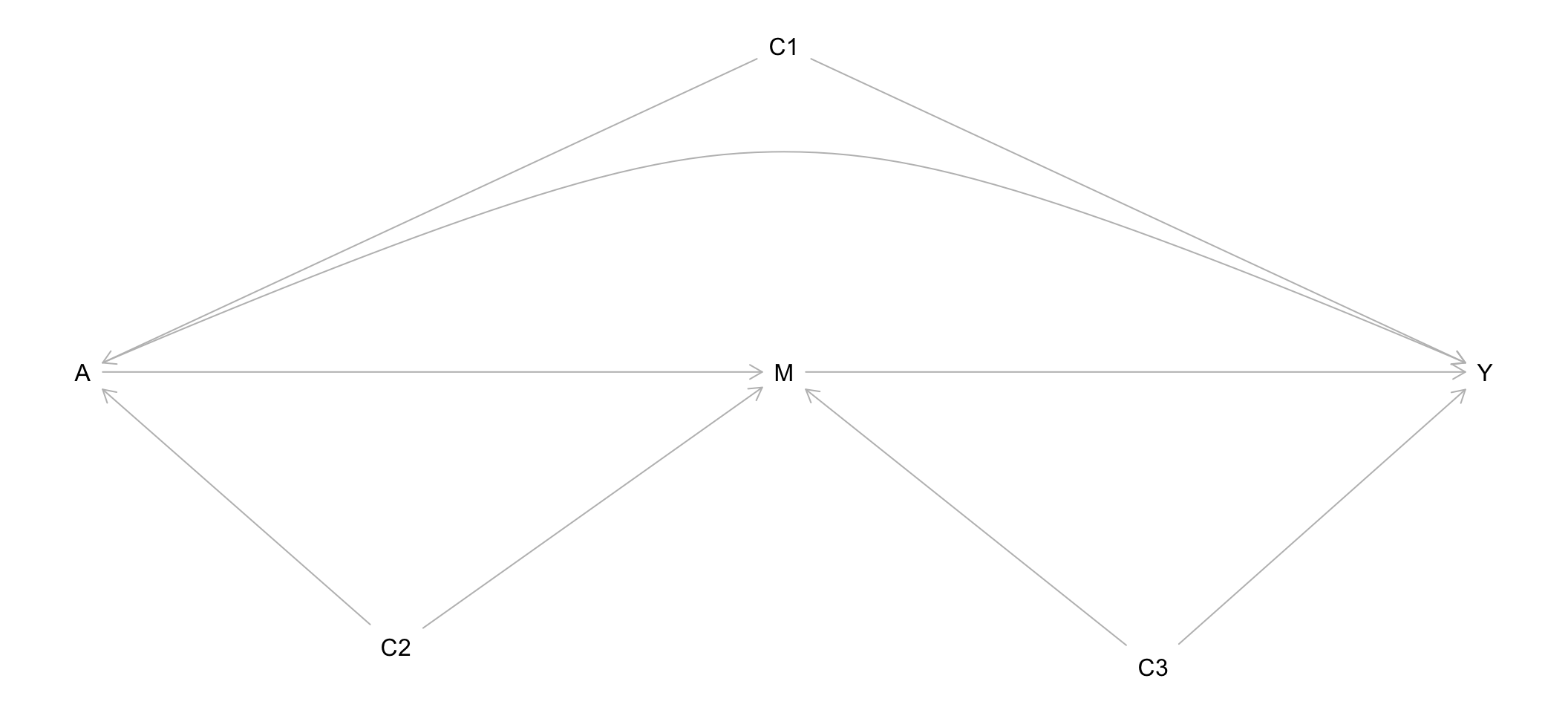Topic 14 Time-Varying Treatments and Mediation Analysis
Learning Goals
- Formulate research questions that can be answered in a time-varying treatment setting
- Formulate research questions that can be answered via mediation analysis
- Explain why regression does not generally work in time-varying settings with treatment-confounder feedback using d-separation ideas
- Relate d-separation ideas to exchangeability conditions for mediation
Slides from today are available here.
Exercises
Exercise 1
For those of you working on a data analysis (or a plan of a data analysis) for the final project, share your data context and research questions with others.
- Mediation
- Brainstorm some research questions that could be answered in a mediation analysis framework.
- What mediators would be of interest? (That is, what direct and indirect effects would be of interest?)
- How realistic would it be to collect data on those mediators?
- Time-varying treatments
- Brainstorm some research questions that could be answered in a time-varying treatments framework.
- Is it more useful to consider time-fixed or time-varying treatments in your context?
- How realistic would it be to collect the longitudinal data needed for a time-varying treatments analysis?
Exercise 2
The following causal graph shows a time-varying treatment setting where treatment is measured at two time points (A0 and A1). It depicts a common occurrence in longitudinal data: treatment-confounder feedback. This is when past treatment \(A_{t-1}\) affects the value of future confounders \(L_{t}\).
Using causal graph ideas, explain why a regression model of the form \(E[Y \mid A_0, A_1, L_1]\) creates a problem for estimating the effect of a treatment strategy for \(A_0\) and \(A_1\).
How would you expect this graph to change under inverse probability weighting? Why does IPW allow us to estimate the effect of a treatment strategy for \(A_0\) and \(A_1\)?

Exercise 3
In mediation analysis, a common first instinct to estimate direct effects is to control for the mediator by including it in a regression model. Let’s explore this intuition by examining the following causal graph.

Based on this graph, what considerations need to be kept in mind in order for this approach to validly estimate a direct effect?